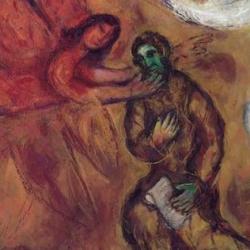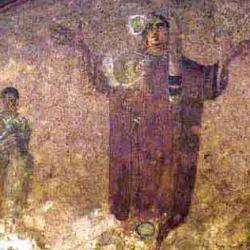Tercio Bretanha Junker’s Prophetic Liturgyhas much to commend it. Junker aims to show how the church is trained for “prophetic praxis” through the liturgy.
Liturgy “should facilitate the community’s awareness of its biblical foundations, the Christian historical trajectory, a consciousness of its cultural unity, and attentiveness to the transformative resonance of prophetic Christian liturgical praxis seeking socio-economic justice in the world” (xx). This occurs through three “levels of ritual communication: spiritual/transcendental language (theology); socio-cultural-language (culture); and political/economic-language (ethics)” (xxi).
He picks up his understanding of prophetic ministry largely from the world of Abraham Heschel’s The Prophets, from which he draws stirring comments like in the prophet “the invisible God becomes audible” (5) and “the prophet was an individual who said no to his society” (7) and “To us the moral state of society, for all its stains and spots, seems fair and trim; to the prophet it is dreadful” (8).
His book tries to show how liturgy cultivates this kind of prophetic sensitivity, passion, courage, and the language to express it. In one summary passage, Junker writes, “From the perspective of living a prophetic sacramental life in the world – hearing the past, sincerely reclaiming its memory; analyzing the presence, critically proclaiming its redemption; and envisioning the future, intensely anticipating its transformation – what is at stake is the challenge of understanding the meaning of the sacraments as a committed spirituality for the well being of everyone in the world which is created for all, not just for some. . . . The prophetic understanding of sacrament points toward unity, reconciliation, and transformation. . . . The pleasure of worshipping God together and the enjoyment of serving our neighbor are points of departure in prophetic praxis and the sacraments are the reference point and foundation” (38).
Sacraments and liturgical action are, in short, themselves a form of critique of the world as it is, as well as a way of forming prophets with a different memory, analysis of the present, and hope for the future. In a later chapter, Junker links this with Trinitarian theology to form a “matrix of total sacramental rituality.” That makes an already complex schema even more complicated and robs the book of a good bit of its punch.
Emphasizing the prophetic dimension of liturgy runs the risk of instrumentalizing liturgy, turning into a mechanism of a political or economic agenda. Junker is aware of the risks, and quotes Romano Guardini’s observation that the liturgy is not means “but an end in itself” (88). Given his theme, Junker could have done with more cautions along these lines.
One final observation: Junker’s book is stuff with bibliography, a fair bit of which was new to me. Can’t have enough books, I say. But Junker piles up the references so thickly that it is sometimes hard to dig up his own views.
That’s an unfortunate weakness because the theme of the book – the power of the liturgy to form a community of prophets – is exceedingly important.















